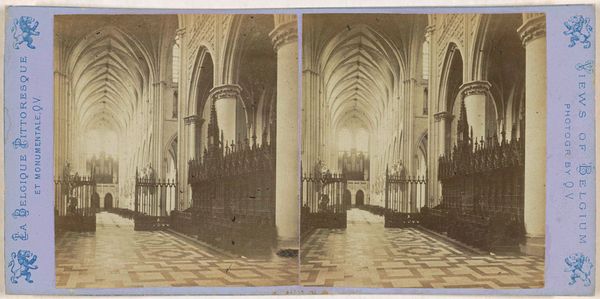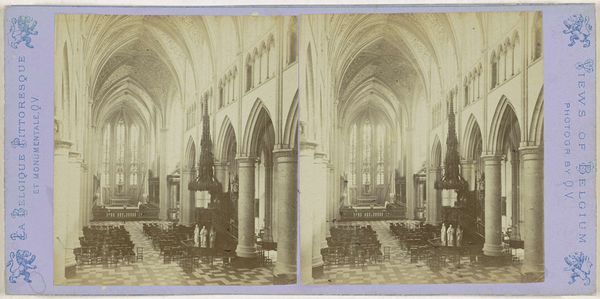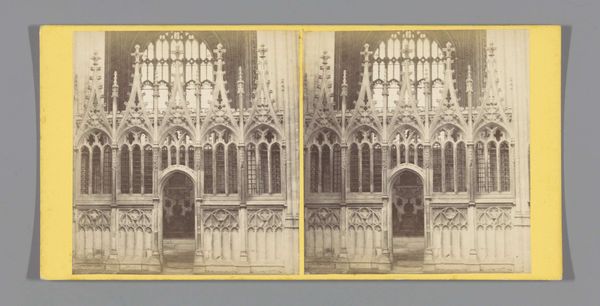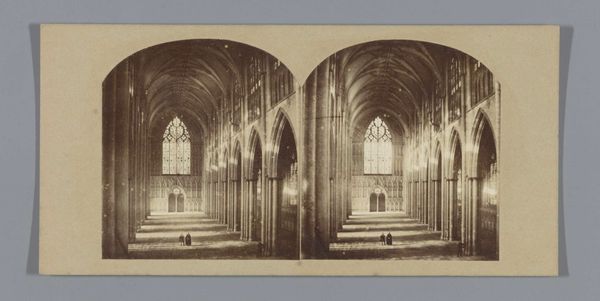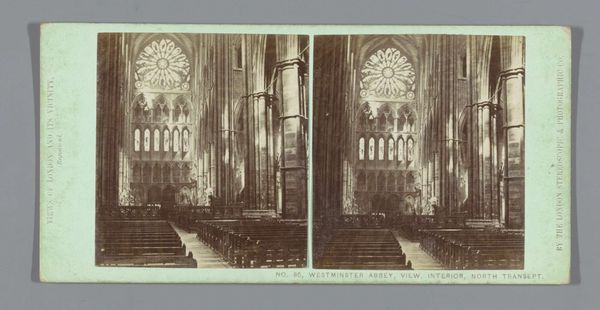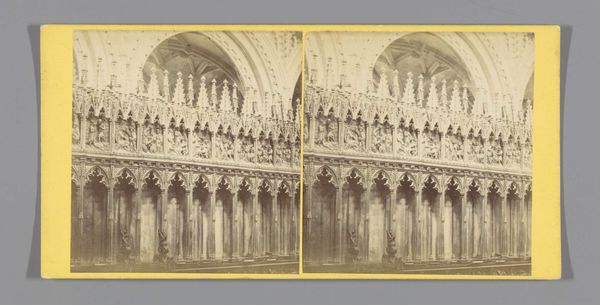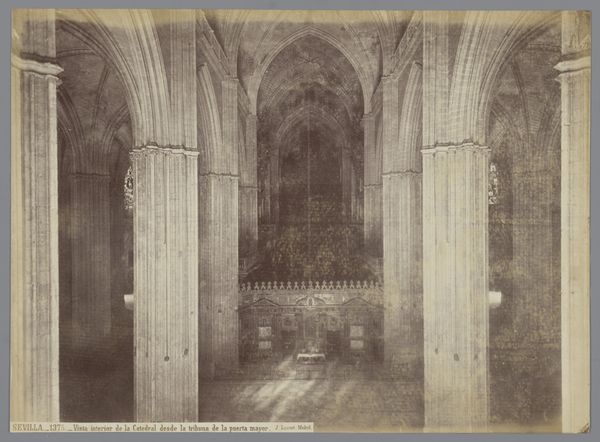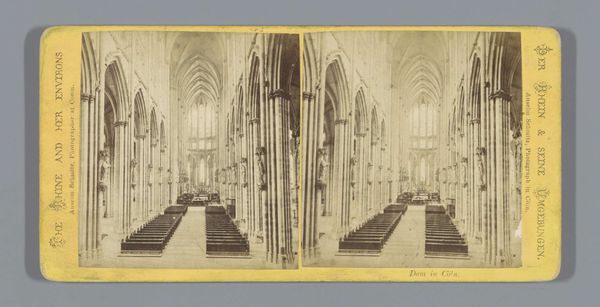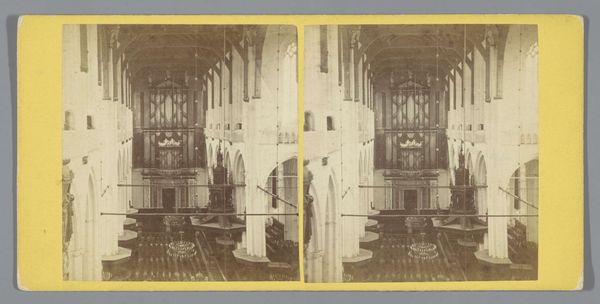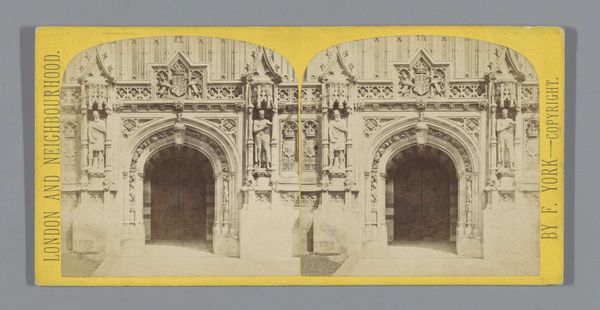
print, photography
# print
#
landscape
#
photography
Dimensions: height 85 mm, width 175 mm
Copyright: Rijks Museum: Open Domain
Editor: This is "Interieur van de Sint-Jacobskerk in Luik," or "Interior of the St. James' Church in Liège," created sometime between 1866 and 1870 by Jules Hippolyte Quéval, and held at the Rijksmuseum. It’s a photograph presented in stereo, meant to give depth. The first thing I notice is the soft, almost ethereal quality of light. What aspects of the making of this print do you find most compelling? Curator: For me, it begins with recognizing this image not simply as a representation, but as an object manufactured under very specific conditions. Consider the collodion process likely employed. This was a time-sensitive method, requiring immediate development. We're not just seeing a church interior; we are witnessing the constraints and possibilities afforded by this particular photographic chemistry. Think about the labor involved – preparing the glass plate, the exposure time, the darkroom work. How do those material realities shape our understanding of what we’re seeing? Editor: So the image itself becomes a record of the process, a physical manifestation of labour? Curator: Precisely! And consider the economic implications. Photography was becoming more accessible, but still involved specialized knowledge and equipment. Who had access to create such images, and what were their motivations for doing so? Was it purely artistic, or did it serve a commercial or even propagandistic function related to religious institutions solidifying social bonds? This piece raises fascinating questions about art's entanglement with technological development, capitalism and social forces. Editor: I hadn't considered that it could have a connection to social or capitalistic endeavors! It changes my view. Curator: Exactly, looking at it from this viewpoint helps understand this artwork more deeply. Editor: Thinking about the conditions of its creation gives me a deeper understanding and respect for the print as a historical and social document, not just as an artistic image. Thanks for expanding my perspective.
Comments
No comments
Be the first to comment and join the conversation on the ultimate creative platform.
